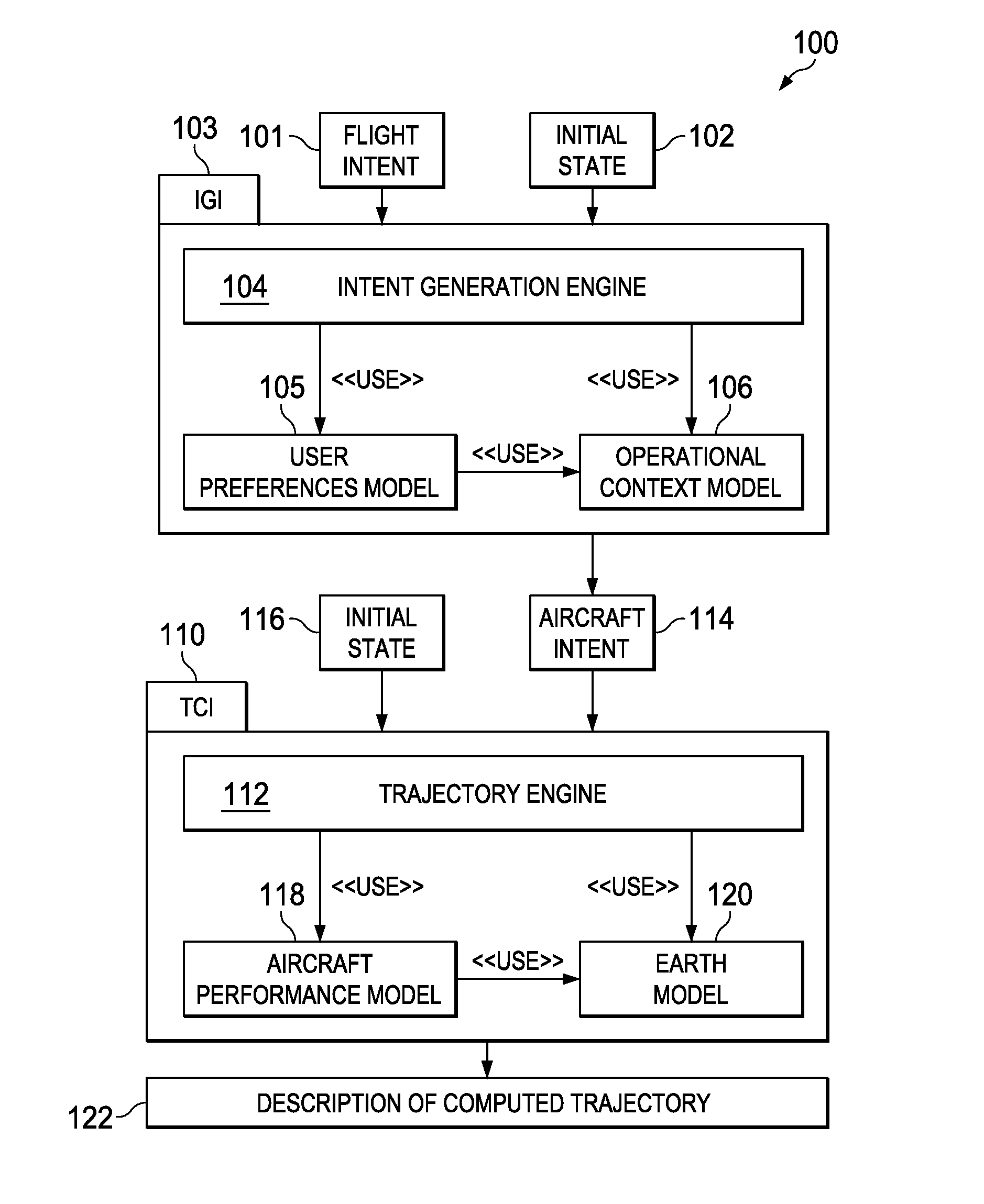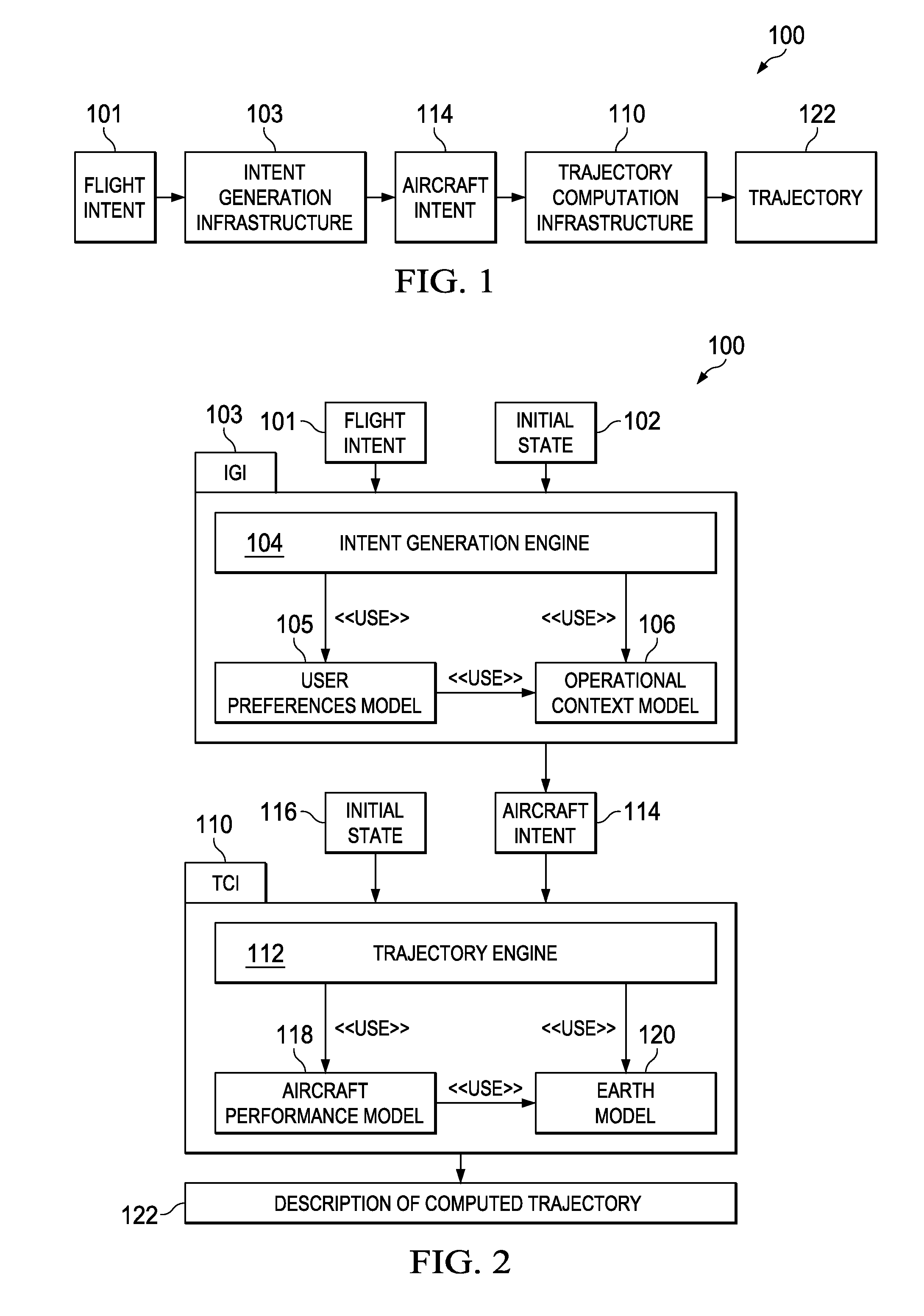Using aircraft trajectory data to infer aircraft intent
a technology of aircraft trajectory and aircraft, applied in the field of aircraft trajectory data to infer aircraft intent, can solve the problems of unambiguous trajectory, and low accuracy of aircraft intent data
- Summary
- Abstract
- Description
- Claims
- Application Information
AI Technical Summary
Benefits of technology
Problems solved by technology
Method used
Image
Examples
Embodiment Construction
[0052]The following information regarding trajectory prediction may assist in understanding the present disclosure. The process of predicting the trajectory of an air vehicle may involve the following pieces of information.
[0053]Aircraft intent (AI) is a formal description of how the air vehicle is to be operated during the time interval for which the predicted trajectory is valid. This information, which can be expressed by means of an aircraft intent description language (AIDL) captures all the details related to the specific aircraft motion that gives rise to the trajectory of interest.
[0054]The aircraft performance model (APM) provides all the aircraft-specific details that influence aircraft response. For example, it may include aerodynamic and propulsive characteristics, preferred and default flap schedules and other maneuvers, operational limitations, etc.
[0055]The Earth model (EM) provides all the details necessary to represent mathematically the influences of the environmen...
PUM
 Login to View More
Login to View More Abstract
Description
Claims
Application Information
 Login to View More
Login to View More - R&D
- Intellectual Property
- Life Sciences
- Materials
- Tech Scout
- Unparalleled Data Quality
- Higher Quality Content
- 60% Fewer Hallucinations
Browse by: Latest US Patents, China's latest patents, Technical Efficacy Thesaurus, Application Domain, Technology Topic, Popular Technical Reports.
© 2025 PatSnap. All rights reserved.Legal|Privacy policy|Modern Slavery Act Transparency Statement|Sitemap|About US| Contact US: help@patsnap.com



